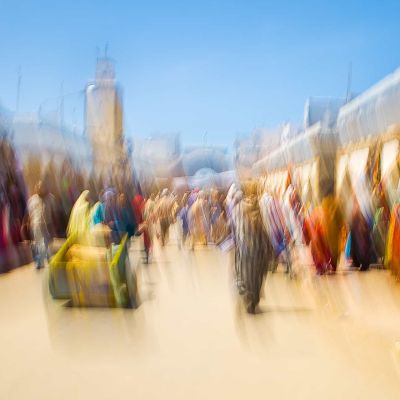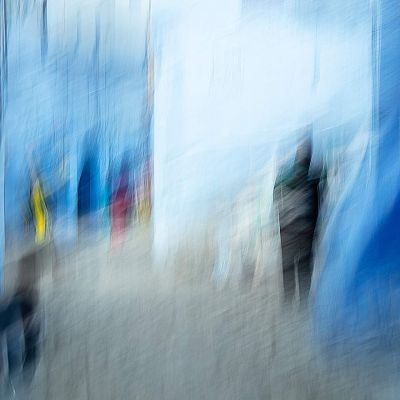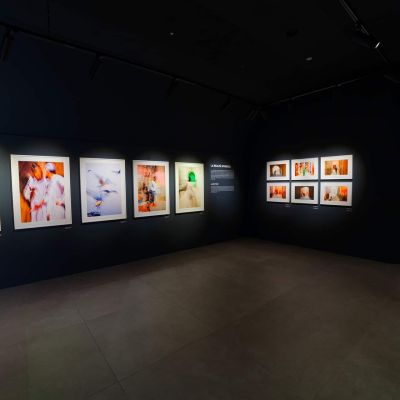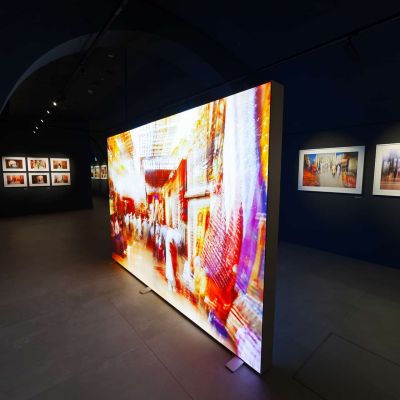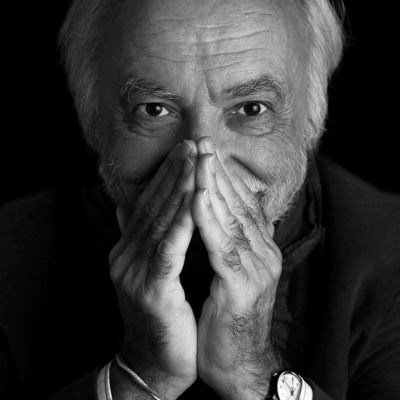MUSEC, VILLA MALPENSATA, SPAZIO MARAINI
The exhibition launches the events of a cultural season that MUSEC is dedicating to Morocco, to the arts, to the people, to the formal suggestions that the landscape and history of this country have given to the culture of the West. Roberto Polillo is a photographer-traveller, always in search of the ‘spirit of places’. His strongly impressionistic images of Morocco bring to life atmospheres full of magic and colour, where centuries-old architecture and elusive figures stand out between tradition and change. The exhibition is the result of a visual research project that MUSEC launched in 2015; it starts from the consideration that the photographer’s gaze is capable of going beyond Orientalist stereotypes, to more intimately grasp the values of an exoticism that constitutes the generic and universal tendency of the soul that leads men to desire what is foreign and unknown. All the works on display and in the catalogue derive from photographs taken by Roberto Polillo during seven trips to Morocco, between the end of 2005 and 2018. The original photographs were taken with the professional digital cameras CANON EOS 5D (2005-2008), CANON EOS-1 Ds Mark III (2008-2012), CANON EOS 5DSr (2018). The rendering of the ‘blurred’ effect follows an artistic procedure intended to render the idea of an altered spatial perception. The camera is moved by slight movements that affect the image with fluid lines while maintaining high sharpness.
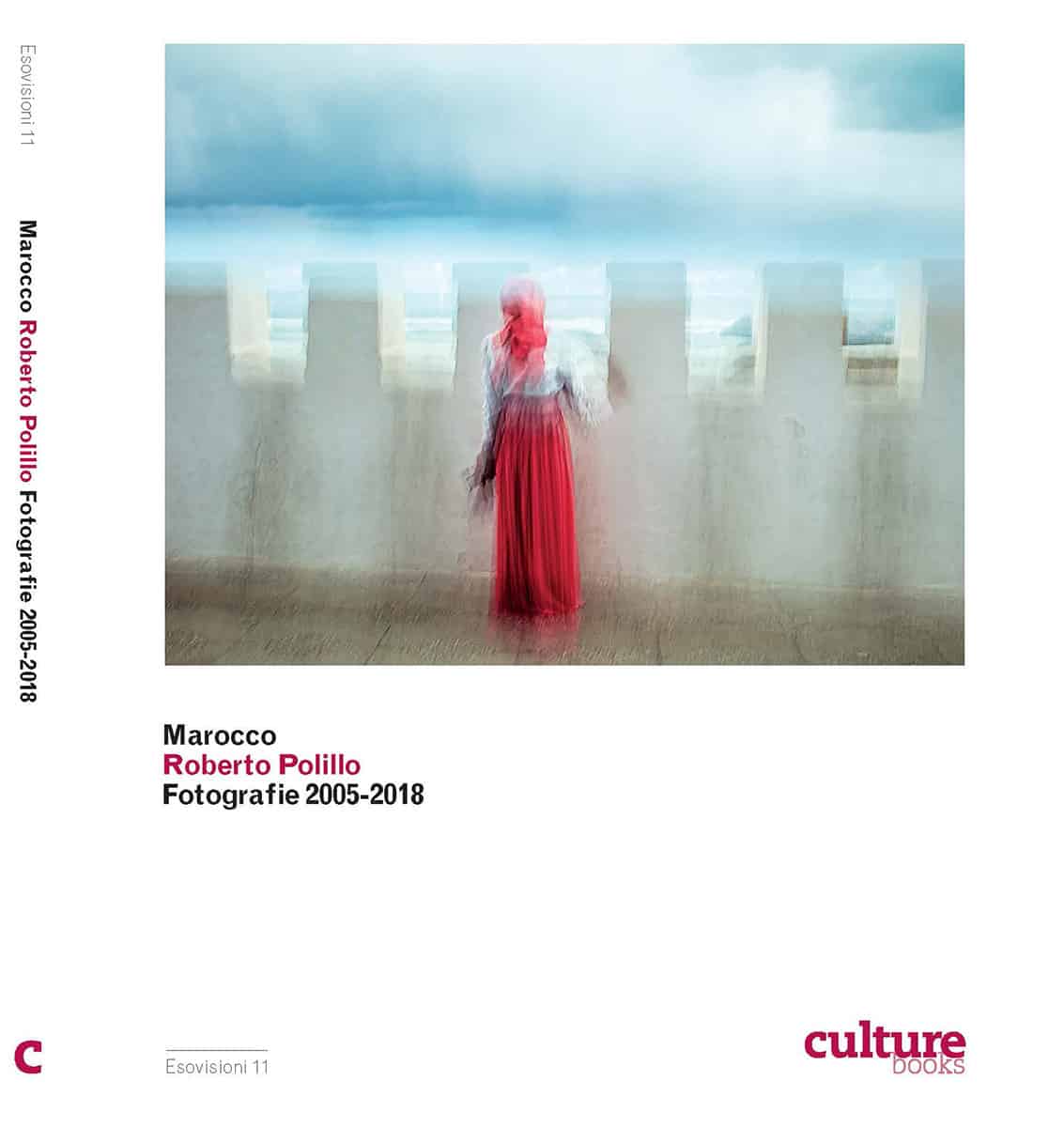
Artist biography
Roberto Polillo was born in Milan in 1946. His father Arrigo, a jazz critic, historian and promoter, was first editor-in-chief and then director of the magazine Musica Jazz. As a result of his father’s activity, Roberto began to know and use photography at a very young age, immortalising from 1962 to 1974 over a hundred concerts of the major jazz artists of the time performing in Italy. These shots have been published numerous times in magazines, books and CDs, as well as on the Internet. His photographic book Swing, Bop & Free (2006) presents a selection of images of more than 100 musicians active during the 1960s, images accompanied by texts and quotations by his father Arrigo and other authors.
However, starting in the 1970s, it was the innovative world of information technology that shaped the professional life of Roberto Polillo, who became an entrepreneur, consultant and manager in the software and IT services sector, as well as co-founder and CEO of Etnoteam, a group of IT and Internet service companies, including INET. At the same time, Polillo was also a university lecturer for 41 years (from 1974 to 2015), first in the field of software engineering and later of the Internet, holding various professorships at the State University of Milan and the University of Milan Bicocca.
During the long years dedicated to the Etnoteam group’s companies, Polillo continued to pursue photography only occasionally, in an amateur manner. He started practising it again more extensively in 2003, after leaving his managerial activity. Somehow continuing his photographic experience linked to the world of entertainment, he initially devoted himself to photographing various street artist festivals and documenting the achievements of street art, in Italy and abroad, and then devoted himself extensively to travel photography. Travelling, in fact, was and is another of Roberto Polillo’s great interests and he has visited more than 60 countries to date. These trips became more frequent with the emergence of digital photography in the early 2000s.
During his second trip to Morocco, at the end of 2005, Polillo accidentally experimented with what would later become known as the ICM (Intentional Camera Movement) technique: through a lucky ‘mistake’ in the camera setting, the image is characterised by a blurred effect. The images are taken with long exposure times by moving the camera during the shot: the result is fascinating and pictorial-looking representations, very different from traditional travel photographs and also from the analogue black-and-white photographs Polillo had taken for jazz musicians. This gave rise to the Impressions of the World project, an artistic adventure that took the artist to over 25 countries, from Venice to the Middle and Far East, North America and Central America. In the project Future & The City, Roberto Polillo instead explores visual hypotheses about the cities of the future.
With the death of his wife Patricia – which occurred in June 2014 – photography, which had always been a collateral activity to Polillo’s professional work, became his main activity, as is also shown by the strong increase in his exhibition activity and the publication of various photographic books. As part of the Impressions of the World projects, he has so far published the books Visions of Venice (2016) and Future & The City (2017). His images have been shown in various solo exhibitions in Venice, Milan, Trieste and Paris and presented at major art fairs in Italy and the United States. In 2016 he was awarded the Lifetime Achievement Award by the EBA-European Business Association as part of the European Business Award Competition.
Today, Roberto Polillo lives between Milan, Rome and Miami, alternating his activity as director of the P&R Foundation with an intense commitment to travel photography and jazz.
The exhibition itinerary
The exhibition itinerary, reflected in the sequence of the works in the catalogue, intends to suggest to the viewer a series of reading levels that correspond to the development of Polillo’s visual research as we can deduce it from the entire corpus from which the works on display were taken, and as it emerged from the anthropological analysis of the works. The approach chosen to present the works is based on the theme of approaching culture and the subjective experience of vision.
Introduction – The section introduces the public to Polillo’s work, understood as an expression of an approach to culture but also as a revelation of one’s own intimacy.
Multiplicity in space – The space represented by Polillo’s work is a well-defined space: the battlements, porticoes, ancient walls refer to an exotic and timeless vision of Morocco. By depicting silent millenary architecture or crowded places, the artist seeks to represent the dual existence of the individual’s consciousness: solitary yet multiple.
Movement: from the everyday to history – Within his works, the space described by the artist expresses a modulation of dynamism. The movement of everyday life is delineated by fluid and fleeting figures, which mark the symbolic background of history with their passage.
The wings of the soul – Like a watercolour, Polillo’s photography describes the walls of buildings, the walls of alleyways, the arcades as stage wings in which the actions of everyday life take place and where the conscious and unconscious ghosts of the artist himself move.
Reality touched – The verticality of the format of the photographs is the artist’s favourite tool to signal a more marked spatial and emotional approach. Compared to the photographer’s eye, the subjects of the shots remain, despite the approach, marked by a certain distance that in this way marks the perception of an “otherness” from which the fascination of Morocco continues to emanate.
“Esovisioni” is a cycle dedicated to the peculiarities and paths of viewing cultures through the photographic lens. The working hypothesis is that the photographer, taking the exotic image as a pretext has, consciously or unconsciously, returned his own inner vision, fertilising the collective imagination with artful images and stereotypes of different cultural realities.


